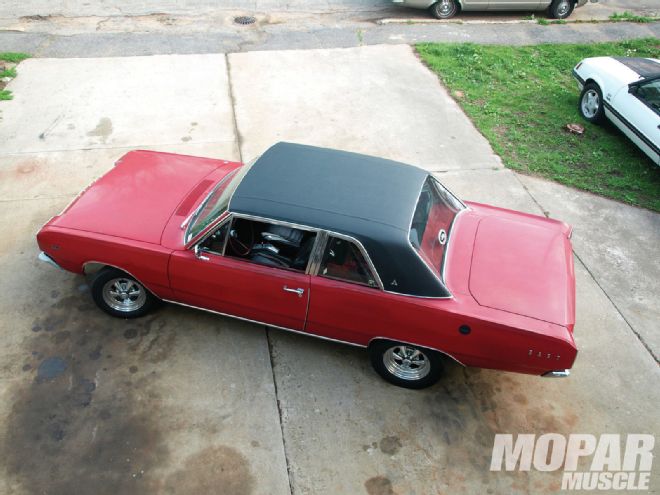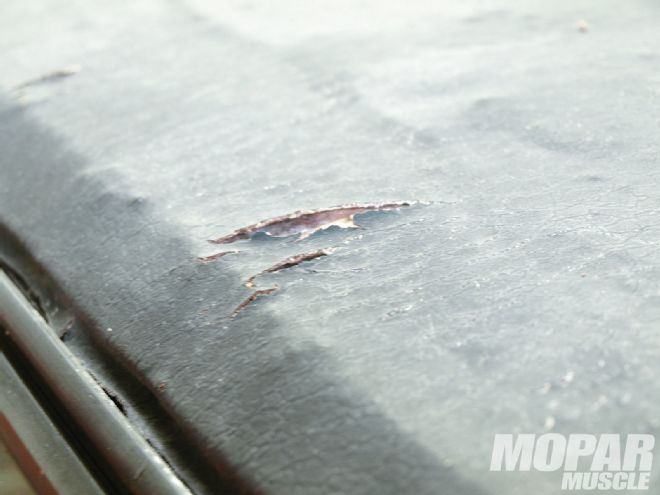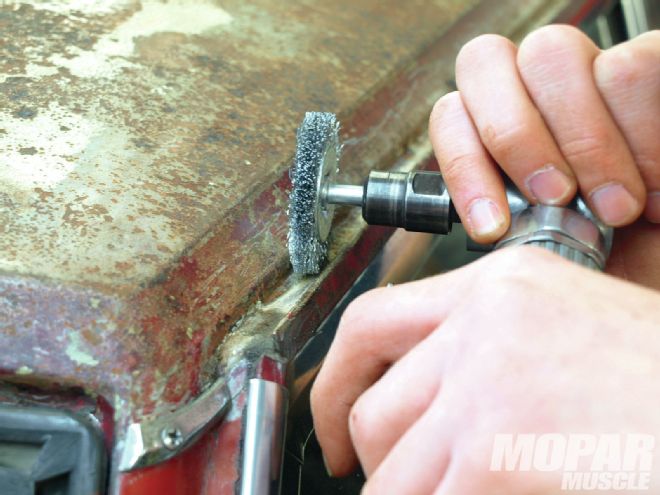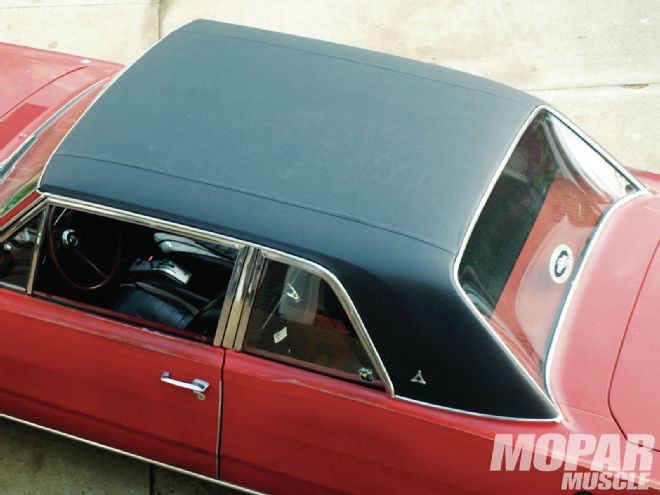
Vinyl tops are a funny thing. Folks either love ’em, or they don’t. There isn’t much middle ground. Intended to lend an upscale feel to the host vehicle, Detroit and the general public rediscovered the vinyl top option together around 1961. Think about it: How many 1950s Mopars have you seen with vinyl tops? Not many. Instead, labor-intensive tri-tone paint schemes were the rage. But by 1965, vinyl tops replaced multi-color paint schemes and were seen on perhaps four in ten cars made, regardless of make. Move up to 1975 and the vinyl top take-rate got closer to eight in ten -- just about every new car was painted a single color. Fashion is fickle, no?
Actually, it was more than fashion. A major reason for the rise of the vinyl top is that automakers -- of every persuasion -- quickly learned a few yards of vinyl-impregnated fabric contributed healthy profits to the bottom line. It all stems from the fact that the roof is one of the largest surface panels on the body -- and a tricky thing to paint properly. Covering it in textured vinyl eliminates the need for the usual high level of body and paint finish work in that area. Customers actually paid more to get less. In 1968, Dodge Dart and Coronet retail buyers paid a flat rate of $78.75 for a vinyl top ($83.05 on the Charger). The actual cost of the vinyl, adhesive, and necessary bright work was about $5 per car. That’s a tidy profit -- and a simple way to add visual flair to any car.
 <strong>01</strong> Hardened from exposure to the intense California sunshine, the factory vinyl was faded and cracked. Unfortunately, the cracks trap moisture and cause surface rust.
<strong>01</strong> Hardened from exposure to the intense California sunshine, the factory vinyl was faded and cracked. Unfortunately, the cracks trap moisture and cause surface rust.
The car currently resides in Massachusetts, where the spent vinyl lid was replaced by the team of Army Sgt. First Class Brian Mauro and his son Mike, a 23-year-old Mopar young gun. If your Mopar has a factory vinyl top you’re planning on freshening, you’ll like this story. Also, if you have a ’67 A-Body (Dart, Valiant, Signet, Barracuda, etc.) you know about the chintzy one-year-only plastic windshield surround trim. We’ll update it to 1968 status and show you how. Let’s dig in.
A well-kept secret among factory production managers was the use of cheaper plastic body filler instead of lead on panel seams hidden beneath the vinyl top. The vinyl protected the porous plastic filler from the elements, and no harm was done. Further savings were often realized by the application of thinner paint -- or even just primer -- beneath the vinyl. These shortcuts added profit and customers weren’t complaining. Vinyl tops were so popular, that period Blue Book value guides assigned extra dollar value amounts to vinyl-equipped cars. And if vinyl was lacking, many used-car lots paid local trim shops to add it, or utilized the popular textured paints that emulated the appearance of vinyl at a fraction of the cost.
As for two-tone factory paintwork, remember this, each color requires a specific trip through the paint booth, and plenty of time consuming masking. Even today, this is true (the paint stripes on SRT8 Challengers trigger a second run through the paint booth). So we can see why vinyl tops were so popular from a manufacturing standpoint.
In the case of the ’67 Dart two-door sedan here, its black vinyl lid was originally installed by workers on the Los Angeles assembly line. Originally built with the optional E-code A861 high-performance 273 four-barrel (high-lift cam, Carter AFB, dual point distributor, high-flow single exhaust with resonator) it’s an oddity, and one of 29 built, according to Galen Govier. Regardless, the vinyl gives the car an extra level of class, despite the fact it is a low-line LL21 sedan, and not the more typical Dart hardtop.
From the outside, only the die-cast metal 273 Four Barrel fender emblems and unique single chrome exhaust tip alert onlookers that there’s a high winding small-block under its flat hood. Backed by a column-shifted 904 and 3.23 geared 71⁄4 axle, it was a pretty nifty package. But your author -- and the Dart’s owner since 1992 -- couldn’t leave well enough alone. In 1995 a 520-inch Stage V Engineering Hemi conversion, full-manual 727, and 4.10 geared Dana 60 were added to the package. Had it been a factory four-speed car, I would have left it alone. But what’s done is done.
05 The rain gutters must be thoroughly cleaned so the vinyl adheres without gaps for a crisp, professional result. But remember, if you strip it all the way down to bare metal, you’re inviting rust unless you re-seal the metal with a generous coat of primer."> <strong>05</strong> The rain gutters must be thoroughly cleaned so the vinyl adheres without gaps for a crisp, professional result. But remember, if you strip it all the way down to bare metal, you’re inviting rust unless you re-seal the metal with a generous coat of primer.
24 Finished. Now the Dart might not look like a possible street racer, but the new top will definitely add to the stealthy look of our Dart. mm">
<strong>05</strong> The rain gutters must be thoroughly cleaned so the vinyl adheres without gaps for a crisp, professional result. But remember, if you strip it all the way down to bare metal, you’re inviting rust unless you re-seal the metal with a generous coat of primer.
24 Finished. Now the Dart might not look like a possible street racer, but the new top will definitely add to the stealthy look of our Dart. mm">
 <strong>24</strong> Finished. Now the Dart might not look like a possible street racer, but the new top will definitely add to the stealthy look of our Dart. mm
<strong>24</strong> Finished. Now the Dart might not look like a possible street racer, but the new top will definitely add to the stealthy look of our Dart. mm